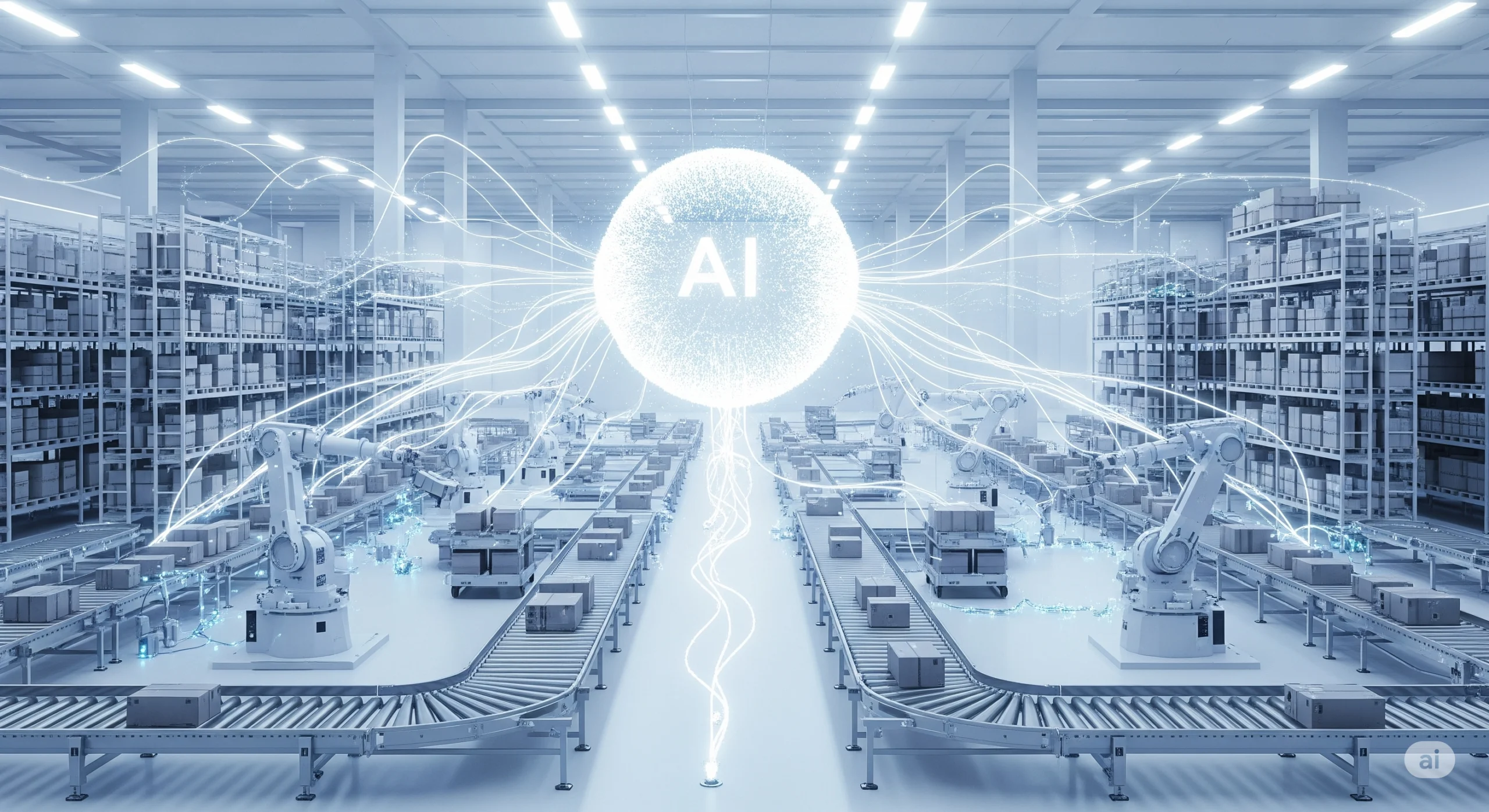Imagine this: your warehouse is stocked to the brim, but customers are calling for products they can’t find. Stockouts are a nightmare, leading to lost revenue, frustrated customers, and missed opportunities.
As a business owner or marketing manager, you’re likely juggling inventory levels too high or too low—a classic supply chain challenge.
But what if there’s a way to predict demand with precision, adjust stock levels in real time, and eliminate these costly gaps? That’s where AI supply chain logistics comes in.
By leveraging artificial intelligence, you can transform your operations, turning guesswork into data-driven certainty.
In this post, we’ll dive into the tools, strategies, and real-world applications that make this possible, helping you build a smarter, more efficient supply chain.
The Strategic Toolkit for AI Supply Chain Logistics
Turning your supply chain into an AI-powered machine starts with the right tools. Let’s break down the essentials:
Strategic Foundation: Before jumping into tools, define your goals. What are you solving for—predictive inventory, demand forecasting, or logistics optimization? A clear strategy ensures your AI investments deliver measurable results.
AI-Powered Tools: Here are some leading platforms designed for AI supply chain logistics, each offering unique capabilities:
Oracle Supply Chain Cloud: Oracle’s platform integrates AI for end-to-end supply chain management. It leverages machine learning to predict demand and automate reordering. Learn more.
IBM Watson Supply Chain: IBM’s solution uses predictive analytics to forecast disruptions and optimize inventory. It’s ideal for businesses dealing with complex logistics networks. Explore the features.
SAP Ariba: This AI-driven tool specializes in procurement and inventory management. It helps businesses reduce stockouts by automating demand forecasting and supplier collaboration. Visit the homepage.
The Role of Human Expertise: AI doesn’t replace human insight—it amplifies it. Your team’s strategic oversight ensures the tools align with business goals and adapt to real-world scenarios.
Time & Resource Investment
Let’s quantify the impact of an AI Supply Chain Logistics. Here’s a side-by-side comparison:
Manual Method:
- Time Spent: 40 hours per week on manual forecasting, stock adjustments, and reporting.
- Costs: 10+ FTE (full-time equivalent) staff for inventory management alone.
- Outcomes: 20% risk of stockouts due to human error or data overload.
AI-Powered Method:
- Time Saved: 70% reduction in manual effort—AI handles predictions and automated reordering.
- Cost Savings: Businesses typically see a 60-80% ROI within the first 24 months, thanks to reduced inventory costs and fewer stockouts.
- Outcomes: Stockouts reduced by 75%, with real-time adjustments based on sales trends, weather events, and market shifts.
For a business with an annual turnover of $1 million, this translates to $200,000 in saved inventory costs alone with AI Supply Chain Logistics methodes.
The Implementation Blueprint
Ready to adopt an AI Supply Chain Logistics? Follow this step-by-step guide:
Step 1: Export Your Historical Data: Collect past sales, inventory levels, and logistics metrics. This data is the bedrock of any AI model.
Step 2: Choose the Right Tool: Match your business size and needs with the tools listed above. Start small with a platform that offers a free trial or sandbox environment.
Step 3: Set Up Forecasting Models: Define what success looks like—minimize stockouts, improve order fulfillment rates. Use the tool’s AI to train models on your data.
Step 4: Integrate with Your Existing Systems: Link your AI tool with ERP (e.g., SAP) and CRM platforms for seamless data flow.
Step 5: Monitor and Optimize: Run simulations and refine models monthly. AI systems learn faster with more data.
“Pro-Tip: Monitor lead times for critical goods early and often. By identifying bottlenecks before they become crises, you can fine-tune your models for peak performance.”
Measuring Success: KPIs & ROI
How do you know if your AI-powered strategy is working? Track these key metrics:
| Metric | What It Tells You |
|---|---|
| Reduction in Stockouts | Measures how often products are unavailable to customers. |
| Inventory Turnover | Indicates how efficiently inventory is moving through the supply chain. |
| Order Fulfillment Rate | Shows the percentage of orders shipped on time. |
| Customer Satisfaction | Reflects how stockouts or delays impact retention. |
Scaling & Advanced Strategies
Once you’ve mastered the basics, take your AI supply chain logistics strategy to the next level:
- Expand to Predictive Logistics: Use AI to anticipate transportation costs and fuel surges, reducing shipping delays.
- Implement Dynamic Pricing: Adjust prices based on real-time demand to optimize revenue while preventing stockouts.
- Leverage IoT Sensors: Integrate with physical devices for real-time inventory tracking across warehouses.
Strategic Business Applications
B2B SaaS Companies: Use AI to predict demand spikes during new customer onboarding or contract renewals.
E-commerce Retailers: Forecast seasonal trends to avoid selling out popular items before the holidays.
Digital Agencies: Manage project workflows with AI-driven resource allocation and client delivery timelines.
Common Strategic Pitfalls to Avoid
While AI is powerful, avoid these common mistakes:
- Underestimating Data Quality: Garbage in, garbage out—ensure your historical data is clean and comprehensive.
- Neglecting Employee Training: Foster a data-driven mindset across your team, not just in the IT department.
- Overlooking Integration: Siloed systems kill efficiency; ensure AI tools talk seamlessly to your existing software.
- Ignoring Start-Up Costs: AI tools require upfront investment; plan for training, implementation, and data preparation.
Building Your Content Engine: Systems & Automation
AI supply chain logistics isn’t a one-off solution—it’s a flywheel. Start publishing case studies and ROI reports on your blog. For example, post about “How We Saved 20% on Inventory Costs” to position your business as a thought leader.
Conclusion
AI supply chain logistics is no longer optional—it’s a strategic imperative. By predicting demand, eliminating stockouts, and leveraging smart tools, your business can adapt faster, save more, and delight customers.
Ready to transform your operations? Share your biggest supply chain challenge in the comments below, and let’s discuss how AI supply chain logistics can work for you.
For a personalized strategy, Schedule a Call with our experts today.
Frequently Asked Questions (FAQs)
Q1: Is this suitable for small businesses?
Yes. Many AI tools offer scalable solutions starting with free or low-cost tiers. Small steps yield big results.
Q2: How long does implementation take?
Initial setup can take 2-6 weeks, depending on your data readiness. The ROI often materializes in 6-12 months.
Q3: What about data privacy?
Reputable AI tools encrypt data and comply with regulations. Always review their security protocols before integration.




